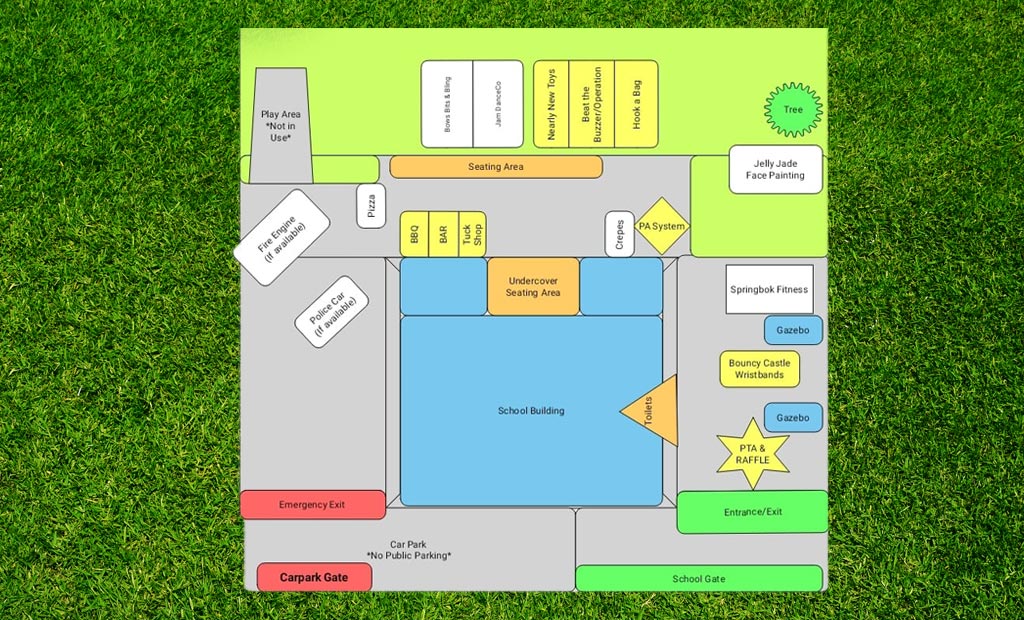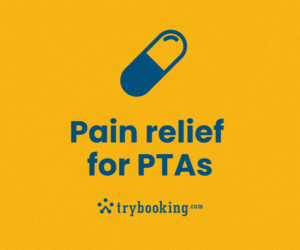Image: Harold Court Primary School PTA
Swathes of colourful bunting hang in the afternoon sun. Smiling children win prizes on the tombola, devour hot dogs and leap on the bouncy castle.
But yesterday, this was the school playing field, and behind the fun lies some serious logistical planning. ‘Every site is unique and comes with its own pros and cons,’ says Keith Breese, site supervisor and caretaker at RGS The Grange, Worcester (360 pupils) and treasurer at Friends of Claines CE Primary School, Worcester (210 pupils). ‘Once these are identified, there are guidelines to follow to make things easier. Setting up an event from scratch can be a steep learning curve – everything has to be in place simultaneously, and services like electricity and water are the key points.’
- Electrics: Once you’ve created a wish list of stalls, make a separate list of those requiring electricity – such as hot beverages – and site them near a power source.
- Water: Identify stalls that need to be near water. Hook-a-duck, sponge the teacher and drinks all need regular top-ups. Put enough people on those stalls so they aren’t left unattended.
- Toilets: Are the school toilets accessible? Portable facilities are an option but can be expensive to hire.
- Entry and exit points: A well-thought-out entry point will channel visitors into the event without creating a queue on the street or nearby front gardens. If visitors are leaving that way too, make sure they won’t collide.
- Access to the school: Make sure you know which rooms are available and who/what will occupy each one.
The head teacher and caretaker don’t need to know every detail but should be kept up to date regularly.
Create a site plan
‘Make a plan – literally,’ says Breese. ‘Go to Google Maps and take a screenshot of the area. Mark out the boundary, the school buildings and any facilities in the grounds, such as a cricket pitch or tennis court. Make sure there’s enough space for the stalls you plan to include.’
Kate Joyce, vice-chair at Hockley Primary School PTA, Essex (330 pupils), has been in charge of the site plan for the past three years. ‘Work out your electricity,’ she says. ‘Where is it coming from? How many sockets will you have? Can external stallholders who need it bring generators, or are they expecting you to provide it? This information will dictate to an extent where you put things.’
Keith Breese adds: ‘Ask the school for the maximum power supply available. Each item will have its own requirement; add them together to get the total required. For example, if the school can give you 32 amps and you plan to have a tea urn (12.5 amps), inflatables (three power points at five amps each) and a candy floss machine (five amps), you’ve reached a total of 33 amps and should find an alternative way to power some of your stalls. Always leave spare capacity – pushing the electrics to the limit isn’t safe. Cover trailing cables and never daisy chain extension cables (connecting several together in a row).’
Generators can be noisy. Position them away from attractions like animal petting, which need a quiet space. Hay bales can help suppress unwanted noise.
Electrical equipment must be in good condition, protected from rain and have a current Portable Appliance Test (PAT) certificate. For more information on PAT testing, see the Health and Safety Executive advice: hse.gov.uk/electricity/faq-portable-appliance-testing.htm
Once you’ve positioned your list of stalls and games close to their required services, consider the needs of other stalls. Pony rides can be tucked into a corner, but owners will need to access the field and keep their horseboxes nearby; barbecues must be kept separate from small children for safety reasons.
Position the rest of the stalls relatively close to one another, so visitors can meander without walking too far each time. Put PTA-run stalls likely to make high profits in prime positions. If you have an arena, site it in a space where families will naturally settle to encourage visitors to watch the displays.
Make an entrance
Choose an entry point where people can stand and queue without being in the way and where you can position a ticket sales desk. Stop long queues from forming – a raffle ticket or token stall just inside the fair might work better than selling tickets on the gate.
‘We pre-sell raffle tickets and wristbands for the inflatables the week before the fête to help reduce admission queues,’ says Joyce. ‘It helps make more money too, since people don’t always budget for those things on the day. ‘We don’t monitor re-entry using hand stamps because it creates another job and volunteers are already in short supply.’
Plan what to do in an emergency. Who will be in charge of decision making? Nominate a contact for emergency services and consider how you’ll clear the site if necessary. Ensure there are no obstructions at entry and exit points in case emergency vehicles need access.
Perform a risk assessment
The risk assessment should form part of the event plan and be delivered to the person responsible for the fair, such as the headteacher, caretaker or head of facilities a week before the event. Ask them to acknowledge they are happy with it. Keep things ‘reasonable’ and ‘practicable’. Read through the risk assessment again on the day to familiarise yourself with it. Download a risk assessment template.
Construct your stalls
PTAs often own marquees and gazebos and use the school tables and chairs. Make sure gazebos and marquees are sturdy enough to withstand a breeze; cheaper versions sometimes break easily. It may be cost-effective to hire items. Explain you’re a charity, and ask if there’s a discount.
Ask creative types to make and hang bunting, paint signs and decorate the fair site.
Make sure signs that answer basic questions about where to find toilets, first aid, recycling and the exit are clear and visible.
On the day
Set-up: Assemble your team ready for an early start and problem-solve as you go, to avoid a scramble at the end. Position the site plan so everyone, particularly stallholders, can see the layout. Make a list of everything that needs doing and leave it in a central location. Consider having a heavy-lifting team if you’re erecting larger marquees. Direct volunteers to the list so they can see what needs to be done without needing to ask. First-time helpers who don’t know where items are kept may be overwhelmed, so team them up with an old hand.
Safety briefing: ‘Get all your volunteers in for a chat half an hour before the fair starts,’ says Keith Breese. ‘Make sure everyone has read the risk assessment and knows what to do if things go wrong or the emergency services need access. Make sure everyone knows who is responsible for first aid, electrical problems, cash handling and lost children.’ Unlock the gates and let the fun begin.










